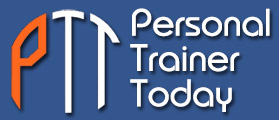The human body has several mechanisms in place to regulate temperature, but when it comes to cooling down, none is more important than perspiring.
This is the combined effects of evaporative cooling and heat loss through perspiration itself.
Triggers
Exercise raises the body’s core temperature, and “working up a sweat” rightly refers to an external sign of intense physical effort, as through exercise. Sweating obviously isn’t always tied to intense physical activity, however. Other expressions, including “don’t sweat the small stuff” and “no sweat”, refer to the link between perspiring and intense effort and/or emotional state. Temperature and humidity are the external factors most often associated with the body’s sweat response, even at rest; but certain emotions, such as anger, anxiety, embarrassment, and fear can also trigger a perspiration response. These triggers point to the fact that the sweating mechanism is controlled by the autonomic nervous system, and is therefore not something that is not under conscious control. For the purpose of this article, however, we will be concerned with sweat as it relates to exercise.
What Affects Sweating During Exercise?
Factors that affect the sweat rate, measured as the volume of sweat/unit time are:
-
Level of physical conditioning;
-
Acclimation to the environment- someone used to the heat will sweat earlier and more;
-
Environmental conditions- air temperature and humidity being higher- sweating greater;
-
Exercise intensity- the harder you exercise, the more you sweat due to increased body;
-
Clothing- the thinner and more breathable the material, the less sweating.
The contents of sweat can vary greatly between individuals, as well as from when the sample is taken, and from what part of the body. Both the level of conditioning and amount of acclimatization can have some bearing on this, as well.
Hot and/or humid weather, even without exercising or engaging in activity, is enough to cause perspiration and call for additional intake of fluid. The sweating mechanism works because there is a gradient for drying the sweat by the dry air passing over it. However, when the humidity is high (above 85%), there is not a sufficient gradient for drying and, as a result, there is no cooling. The body temperature then increases and continues to sweat even more. Thus, there is a very large amount of sweating in very humid environments and participants must be careful not to overheat since the sweating mechanism is largely ineffective. Heated indoor air, as is common in the cooler months, can also cause the skin to lose moisture during the cooler months. In addition, altitudes over 8,200 feet (2,500 meters) can lead to an increase in urination and more rapid breathing, which in turn depletes fluid reserves.
Even though several electrolytes are lost in sweat including- sodium, potassium, iron, magnesium, chloride and calcium, the main losses come from sodium and potassium. Studies looking at sweat losses during a 7-hour exercise stress protocol (5- 1hr exercise sessions- 20 min rest) found the sweat content did not change much after sessions 1, 3, and 5 and was related to initial sweat content (Montain et al 2007). This suggests that a replacement drink could be specifically designed if the initial content is known and the length of the event and environmental conditions are known, too. Lack of water can lead to dehydration, a condition that occurs when the body has insufficient water to carry out normal functions. In the second part of this article, we will look at assessing hydration in athletes.
References
1. Armstrong LE (2000): Performing in Extreme Environments. Champaign: Human Kinetics.
2. Montain, Scott J., Samuel N. Cheuvront, and Henry C. Lukaski. “Sweat mineral-element responses during 7 h of exercise-heat stress.” International journal of sport nutrition and exercise metabolism 17.6 (2007): 574.
3. Armstrong LE, Soto JA, Hacker Jr FT, Casa DJ, Kavouras SA & Maresh CM (1998): Urinary indices during dehydration, exercise, and rehydration. Int. J. Sport Nutr. 8, 345-355.
4. Institute of Medicine (US). Panel on Dietary Reference Intakes for Electrolytes, and Water. Dietary reference intakes for water, potassium, sodium, chloride, and sulfate. National Academies Press, 2005.
5. Sawka, Michael N., et al. “American College of Sports Medicine position stand. Exercise and fluid replacement.” Medicine and science in sports and exercise 39.2 (2007): 377-390.
6. Montain, Scott J. “Hydration recommendations for sport 2008.” Current sports medicine reports 7.4 (2008): 187-192.
These resources are for the purpose of personal trainer growth and development through Continuing Education which advances the knowledge of fitness professionals. This article is written for NFPT Certified Personal Trainers to receive Continuing Education Credit (CEC). Please contact NFPT at 800.729.6378 or info@nfpt.com with questions or for more information.

